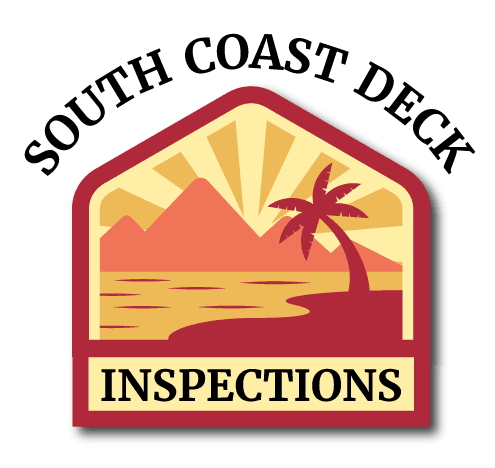Comprehensive Deck Inspection Guideline
Guidelines for Deck Inspection
Load-Bearing Wood in Exterior Elevated Elements
Elevated elements such as decks, walkways, balconies, stairs, and other outdoor structures constructed with wood demand meticulous examination to ensure the safety of occupants and guests. This scrutiny is particularly critical for apartment buildings with three or more units and homeowners’ associations (HOAs) with two or more units.
Load-Bearing Components
Inspect for signs of wear, deterioration, warping, rotting, dry rot, termite infestation, or cracking of the construction materials.
Deck, Walkways, Balcony, and Stairs and Landings
Confirm secure attachments with no loose structural components. Inspect stringers, treads, and railings for signs of rot, rust, or damage, ensuring secure attachment to the deck.
Decking and Flooring
Assess the condition of wood panels, synthetic material coatings, and other visible elements used for decking and flooring.
Condition of the Wood
Pay attention to the condition of all wood components, ensuring moisture retention is minimized to prevent damage.
Waterproofing Elements
Evaluate the integrity of flashing and waterproofing materials to prevent water intrusion, which can lead to damage and structural failure.
Soil Underneath
Ensure that no soil comes into direct contact with the wooden components to prevent potential insect and water damage and rot.
Structural Support Under the Elements
Examine framing boards, joists, beams, and columns for rot, breakage, or issues resulting from normal wear and tear, water damage, or structural failure.
Fasteners and Flashing Details
Inspect sheet metal flashing and fasteners for water stains, damage, or rust that may compromise stability.
21st Century Technology Comes Standard
Tools Used in Deck Inspections for Apartments, and HOA’s in California
Standard Inspection Tools for Multi-Family Buildings in California
We use a variety of thermal imaging cameras and applicactions as needed. These cameras are vital in detecting heat patterns and identifying moisture issues in building components, crucial for SB 326 inspections. Some of our tools may include:
Thermal Imaging
Our intense non-invasive visual inspections cover criteria for either HOA and apartment multifamily conforming properties. However, when signs of rot, water intrusion, or structural failure are detected, we employ the following specialized tools for a more in-depth investigation:
FLIR Systems, Inc.: FLIR’s thermal imaging cameras can be used for assessing safety and structural integrity, particularly useful in evaluating exterior elevated elements (EEE).
Testo Inc.: Testo’s cameras, with their high resolution and sensitivity, are ideal for preventive maintenance and diagnostics in complex building systems.
Moisture Meters
Moisture meters are essential for assessing moisture content in various materials, a key aspect in inspecting EEE for potential risks. We may use these professional grade instrumnets:
Protimeter: Protimeter’s instruments are crucial in identifying moisture-related issues in buildings, which can affect the integrity of EEE.
Extech Instruments (A FLIR Company): Extech’s meters, with features like pinless measurement, are vital in providing comprehensive moisture analysis during inspections.
HD Photography
We use a variety of high-definition photography technology when needed, including:
+ 48MP Main: 24 mm, ƒ/1.78 aperture, second‑generation sensor‑shift optical image stabilization, 100% Focus Pixels, support (super‑high‑resolution deck inspection photos 24MP and 48MP) and:
12MP Ultra Wide: 13 mm, ƒ/2.2 aperture and 120° field of view, 100% Focus Pixels
+5x optical zoom in, 2x optical zoom out; 10x optical zoom range and Digital zoom up to 25x
All our deck inspection reports contain resized photographs.
